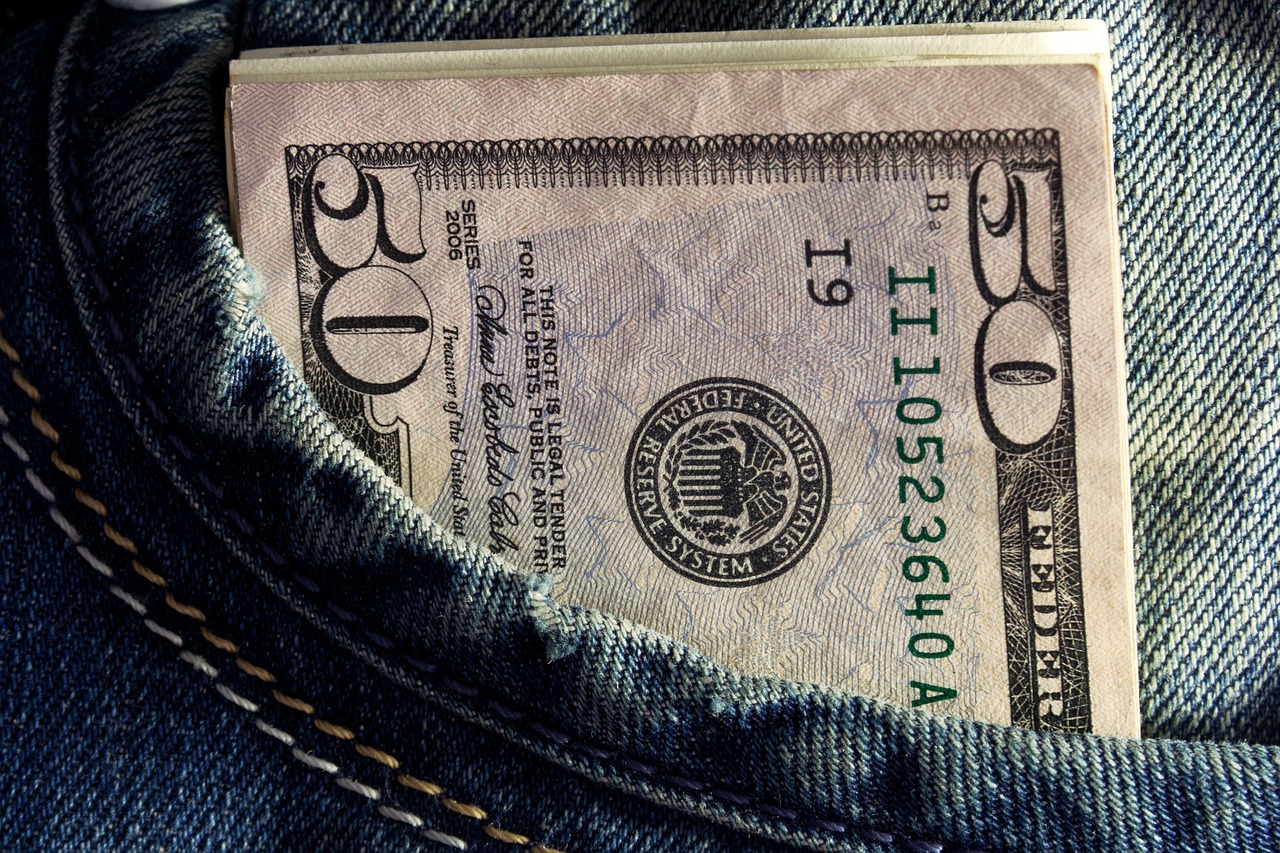Unlock the Secrets: Understanding US Currency Restrictions and Exchanges in the Philippines
GPT_Global - 2024-01-16 10:00:07.0 986
Are there any restrictions on using US money in the Philippines for purchases or transactions?
The Philippines is a popular destination for many US citizens, whether for travel, work or retirement. As such, it's common for them to wonder about using US dollars for purchases or transactions in the country. Fortunately, there are no restrictions on using US money in the Philippines.
US currency can be used for most purchases and transactions, such as buying goods and services, paying for accommodations, and even tipping. However, it's important to note that certain establishments may only accept Philippine pesos, particularly smaller local businesses. In these cases, it's advisable to exchange your US dollars for pesos before making any purchases.
For those who frequently travel between the US and the Philippines, having access to US dollars can also make remittances easier. Many remittance businesses allow customers to send money from the US to the Philippines in US dollars, which can then be collected by the recipient in pesos. This makes it more convenient and cost-effective compared to exchanging currencies multiple times.
It's also worth mentioning that US dollars are generally accepted at banks and foreign exchange kiosks throughout the country. However, it's important to do your research and compare rates before making any currency exchanges, as some establishments may charge higher fees.
In conclusion, there are no restrictions on using US dollars in the Philippines for purchases or transactions. However, it's always a good idea to have some Philippine pesos handy, especially when dealing with smaller local businesses. And for those who frequently transfer money between the US and the Philippines, utilizing remittance services can make the process smoother and more affordable. So don't hesitate to use your US dollars in the Philippines, but be mindful of currency exchange rates and fees to ensure a hassle-free experience.

What is the most secure method for transferring large sums of US money to the Philippines?
When it comes to transferring large sums of money to the Philippines from the US, it's important to ensure a secure and reliable method. With advancements in technology and the rise of remittance businesses, there are various options available, but which one is the most secure? Let's take a look.
One of the most secure methods for transferring large sums of US money to the Philippines is through wire transfers. This involves electronically moving money from one bank account to another. These transfers are highly secure and regulated by federal agencies, providing peace of mind for the sender and recipient.
Another secure option is using online remittance services. These platforms offer a safe and efficient way to transfer money overseas. They use encryption technology to protect sensitive information, and most have additional security measures such as two-factor authentication.
For those who prefer a more traditional route, sending a cashier's check or money order can also be a secure option. The sender buys a check or order from their bank and mails it to the recipient, who can then deposit it into their own bank account in the Philippines. However, this method may take longer and may involve additional fees.
Additionally, it is important to choose a reputable remittance business or bank when transferring large sums of money. Research and read reviews to ensure the company has a good track record and implements strong security measures.
Is there a limit on how much US cash I can carry on me while traveling to the Philippines?
When traveling to the Philippines, many people may wonder if there is a limit on how much US cash they can carry with them. This is a common concern for those who plan on remitting money to their loved ones or conducting business transactions in the country.
The good news is that there is no specific limit on how much US cash you can bring into the Philippines. However, it is important to declare any amount exceeding $10,000 USD to Philippine customs upon arrival. Failure to do so may result in penalties or confiscation of the cash.
It is also worth noting that carrying large sums of cash while traveling can put you at risk for theft or loss. It is advisable to consider other options such as wire transfers, debit/credit cards, or using a remittance service to securely transfer funds. These methods are not only more convenient but also offer better exchange rates.
If you do choose to bring US cash with you, it is recommended to keep it in a secure location and limit the amount you carry on you at any given time. It is also wise to have some local currency on hand for smaller purchases and emergencies.
In conclusion, while there is no set limit on how much US cash you can bring into the Philippines, it is important to do so responsibly and within the laws of both countries. Consider using alternative methods of remittance for convenience and safety. Happy travels!
How are US money exchanges regulated in the Philippines?
The United States and the Philippines have a strong economic relationship, with many individuals and businesses conducting financial transactions between the two countries. One of the most common means of transferring money between the US and the Philippines is through money exchanges, also known as remittance businesses. These businesses play a crucial role in the economy of both countries, as they facilitate the flow of money for a variety of purposes.
In the Philippines, money exchanges are regulated by the Bangko Sentral ng Pilipinas (BSP) or the Central Bank of the Philippines. The BSP is responsible for overseeing the operation and activities of all money exchange businesses to ensure compliance with laws and regulations.
One of the key regulations imposed by the BSP on money exchanges is the requirement for them to obtain a license to operate. This license is granted only to businesses that meet certain criteria, including having adequate capital, complying with anti-money laundering laws, and having a solid track record of financial stability and integrity.
Additionally, money exchanges must comply with strict reporting and record-keeping requirements set by the BSP. This includes maintaining transaction records and submitting regular reports to the BSP, which are used to monitor the flow of funds and prevent illegal activities such as money laundering.
In the US, money exchanges are also subject to various regulations from the Federal Reserve and the Department of the Treasury. These regulations aim to prevent illegal activities, protect consumers, and ensure the stability of the US financial system.
One important regulation is the Bank Secrecy Act, which requires money exchanges to maintain detailed records of transactions and report any suspicious activity to the Financial Crimes Enforcement Network (FinCEN). FinCEN is a bureau of the US Treasury Department that monitors and investigates financial crimes, including money laundering and terrorist financing.
Overall, the regulation of US money exchanges in the Philippines is a collaborative effort between the two countries. By implementing strict regulations, both governments work to ensure the safety and integrity of financial transactions between the US and the Philippines, providing peace of mind for those who rely on money exchanges for their financial needs.
Can I use traveler's checks denominated in US dollars in the Philippines?
Traveler’s checks are a convenient and secure way to carry money while traveling to the Philippines. They can be easily exchanged for local currency at banks, exchange booths, and many hotels. As a remittance business, we often receive inquiries from customers about the acceptance of traveler’s checks in the Philippines. The answer is yes, traveler’s checks denominated in US dollars are widely accepted in the Philippines. In fact, they are one of the most commonly used forms of payment for foreign visitors. This is because US dollars are widely recognized and accepted as a universal currency. However, it is important to note that not all establishments may accept traveler’s checks in the Philippines. It is recommended to exchange them at banks or authorized money changers as they offer competitive exchange rates. Additionally, some establishments may charge a commission fee for accepting traveler’s checks. If you plan on using traveler’s checks in the Philippines, it is advisable to carry a mix of smaller and larger denominations. Smaller denominations are more practical for everyday purchases, while larger ones may come in handy for bigger expenses. It is also important to keep track of the serial numbers of your traveler’s checks and store them separately from your cash. In case they get lost or stolen, you can report the missing checks and get them replaced. In conclusion, traveler’s checks denominated in US dollars are widely accepted in the Philippines and can be a safe and convenient way to carry money during your travels. Just be aware of any additional fees and always exchange them at reputable establishments for a hassle-free experience.Is it possible to exchange US dollar coins in the Philippines?
If you are planning to send money from the United States to the Philippines, you may be wondering if it is possible to exchange US dollar coins in the Philippines. The answer to this question depends on which remittance service provider you choose to use.
Some remittance businesses in the Philippines may accept US dollar coins for exchange, while others may not. It is important to do your research and check with different providers to see if they accept coins or only bills.
Another factor to consider is the current exchange rate. Depending on the value of the coins and the current exchange rate, it may be more beneficial to convert the coins into bills before sending them to the Philippines.
Furthermore, some remittance providers may charge a higher fee for exchanging coins compared to bills. This could affect the total amount that your recipient receives in pesos. Therefore, it is important to compare fees and rates among different providers before making a decision.
If you are unable to find a remittance business that accepts US dollar coins, you can also consider exchanging them at a bank or currency exchange office in the Philippines. This may require some extra steps, such as opening a bank account or providing identification, but it could be a viable option if you have a large amount of coins to exchange.
Ultimately, it is best to plan ahead and do research before sending money to the Philippines to ensure that you choose the most cost-effective and convenient option for you and your recipient. With the right information and preparation, you can successfully exchange US dollar coins and send money to your loved ones in the Philippines.
What is the best way to budget for expenses while traveling in the Philippines using US dollars?
Traveling to the Philippines can be an amazing experience, but it's important to plan ahead and budget wisely for your expenses. As a US traveler, there are some tips and tricks you can use to make the most out of your budget while in the Philippines.
The first step is to convert your US dollars to Philippine pesos. You can do this at any bank or currency exchange before your trip, or you can withdraw money from an ATM once you arrive in the Philippines. Keep in mind that ATMs may have withdrawal limits and fees, so be sure to check with your bank beforehand.
Another tip is to research and compare prices for accommodations, transportation, and activities. The cost of living in the Philippines is generally lower compared to the US, so you may be able to find great deals on hotels, flights, and tours. It's also a good idea to look for local restaurants and markets rather than expensive tourist traps.
While traveling, it's important to keep track of your expenses. This will help you stick to your budget and avoid overspending. You can use a budgeting app or simply write down your daily expenses in a notebook. It's also a good idea to have some emergency cash on hand in case of unexpected expenses.
If you need to send money back to the US while in the Philippines, consider using a remittance service. These services allow you to transfer money quickly and securely, often with lower fees compared to traditional banks. Just be sure to compare rates and read reviews before choosing a remittance provider.
In conclusion, budgeting for expenses while traveling in the Philippines using US dollars can be done with careful planning and research. By converting your currency, being mindful of prices, tracking your expenses, and using a reliable remittance service, you can make the most out of your budget and have a memorable trip in the beautiful Philippines.
Are there any countries where US money is not accepted in the Philippines?
The Philippines is a popular destination for many Americans to remit money to their loved ones. However, there are instances where US money may not be accepted. Here are some countries where US money is not accepted in the Philippines.
1. North Korea - Due to economic sanctions imposed by the United States, US currency is not accepted in North Korea. In fact, any US citizen travelling to North Korea is prohibited from bringing US dollars with them.
2. Cuba - Similar to North Korea, US citizens are not allowed to bring US dollars into Cuba. This is due to the long-standing embargo between the two countries.
3. Venezuela - With the ongoing political and economic crisis in Venezuela, the government has stopped accepting US dollars as payment. Transactions must be made in the local currency, the bolivar.
4. Iran - Due to sanctions placed on Iran by the United States, US dollars are not accepted in the country. Transactions must be made in the local currency, the rial.
5. Myanmar - While US dollars are technically accepted in Myanmar, they must be clean, crisp, and unmarked. Any dollar bill that is old, torn, or marked will not be accepted.
Overall, it is important to research the country's policies before attempting to use US currency for remittance purposes. It may be necessary to convert dollars to the local currency beforehand or use alternative forms of payment like credit or debit cards. As always, it is best to consult with a reputable remittance business for advice on the most efficient and secure way to send money to the Philippines.
About Panda Remit
Panda Remit is committed to providing global users with more convenient, safe, reliable, and affordable online cross-border remittance services。
International remittance services from more than 30 countries/regions around the world are now available: including Japan, Hong Kong, Europe, the United States, Australia, and other markets, and are recognized and trusted by millions of users around the world.
Visit Panda Remit Official Website or Download PandaRemit App, to learn more about remittance info.



